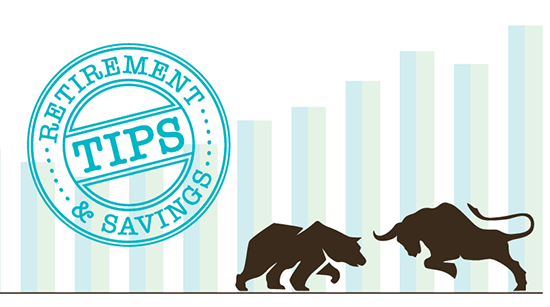
December 2018–
January 2019
Equip
(Ephesians 4:12)
------------------
|





Understanding Basic Investment Principles
By John Brummitt
Most of us have heard the advice: “Save 15% of your income to maintain your current lifestyle in retirement.” Since everyone’s situation is different, how does this work out to be good general information? Most people need 55% to 80% of their pre-retirement income to maintain their lifestyle in retirement. The 15% comes in when financial analysts assume you start saving at age 25 at a lower rate, say 6%, and then build up to 15% over the next few years.
The problem is most of us don’t start saving at age 25, and end up behind the curve. A 35-year-old should have a full year of income saved in his or her retirement account. By age 50, that number should increase to five times his or her annual salary saved. If you are making $35,000 per year at age 50, you should be sitting on a nest egg of approximately $175,000. Since the average Baby Boomer has less than $70,000 squirreled away, it is easy to say we are missing the mark…by a long shot.
Even Millennials are not in a much better position. Their suggested savings rate has increased from 15% to 22%, a figure brought on by lagging investment markets over the last decade. Again, these numbers assume savings start at age 25; if you wait until age 35, this number jumps to an unstainable 34% of income.
When financial analysts put these numbers together, they rely upon some things as constants. Things like interest rates will stay at a constant rate over time. History has demonstrated the stock market is the best return on your investment dollars compared to any other long-term investment. Gold, land, rental homes, etc. are good diversification options but don’t carry the same track record the stock market has kept for a century.

However, before you rush out and start buying stocks, let me explain. If you invest in one company or one mutual fund, you may or may not be outperforming other investments. When most people use the term stock market, they are referring to the S&P 500 Index. This index is merely a selection of companies that make up a diversified portfolio of stocks only. It doesn’t change often, when it comes to the companies inside of the index, so it makes a good reference point for people to judge the overall market. This is what most people consider when they refer to returns of the stock market. But, picking a single company or even a single mutual fund may not be enough to correlate your portfolio positively with the overall stock market.
Another issue: most of us look at the short-term when evaluating long-term investments. This means we want to capture significant growth but avoid downturns in the market. This is why most investment advisors build blended portfolios for their clients. Setting up portfolios to hold stocks, bonds, and other investments allows investors to capture the growth of positive returns and simultaneously protect against downturns in the market. This mixture of stocks, bonds, and other investments changes as you draw closer to retirement. By the time you are ready to retire, you are not looking for growth as much as you are looking for protection for previously accumulated assets.
Investments can be complicated and time consuming to weed through and select on your own. The chances of picking a single stock that will make you wealthy are not much greater than winning the lottery without buying a lotto ticket. The problem is your timeline. Most people could have bought into Amazon when it was $1.50 dollars a share in 1997, but it took 21 years to see those share prices grow to a staggering $1,950 per share in 2018. Twenty-one years of ups and downs, sometimes selling off over half of the value in a few days’ time.
Remember, hindsight is always 20/20, and no one can pick the right investment 100% of the time. Knowing these things up front helps you make better decisions in the long run. No matter when you start saving, or at what amount, be consistent in your contributions and make sure your investment mix is appropriate for your age and timeline. Making those things constant will put you in a much better position when your retirement date arrives.
About the Writer: John Brummitt became director of the Board of Retirement in January 2016. He graduated in 2011 with an MBA from Tennessee Tech University. A 2004 graduate of Welch College, he has been with the Board of Retirement since the spring of 2006. Learn more about retirement options: www.BoardofRetirement.com.
|
|

